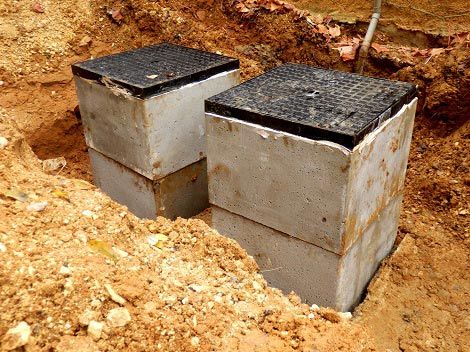Septic Drainfield Problems and How to Prevent Them
Admin • March 19, 2019

As a homeowner with a septic system, you may be sadly familiar with signs that your septic system is struggling. Slow drains, the need for repeated flushing, smelly water in the yard, and sewage odors inside the home are common ones. When most homeowners notice these problems, they often assume the septic tank is at fault. But the septic drainfield may actually be causing the problem.
Keep reading to discover three common problems that befall septic drainfields and advice to prevent each problem.
1. Sludge in the Drainfield
Your septic tank has a T-shaped outlet near the top. Solids are meant to sink to the bottom of the tank, and greasy sludge is meant to rise to the top. This way, the T-shaped outlet pipe stays immersed in the liquid, and only the liquid drains out into the drainfield.
If the level of sludge or scum in the tank grows too thick, sludge and scum may end up in the drainfield. They will coat the soil particles, making the drainfield soil less able to properly filter the septic water. The sludge may also clog the outflow pipes leading into the drainfield. Smelly water may build up in your yard as a result.
To prevent sludge and scum from accumulating in your drainfield, have your septic tank pumped more often. Most homeowners should have their tanks pumped every three to five years. If you have a garbage disposal or a large family living in a home with a small tank, you may need more frequent pumping.
2. Compacted Soil
The soil or gravel in the drainfield is meant to be relatively loose so that wastewater can flow through it freely. If the soil becomes too compacted in certain areas, you may notice pooling water or puddles throughout the drainfield.
The most common causes of compacted soil in a drainfield are parking and building over the drainfield. You should never build any structure - even a small shed - over a drainfield. You should also never build a driveway or even temporarily park your car over the drainfield. If you're not sure where your drainfield begins or ends, have a septic professional outline it for you before you build, and plan your layout around it.
Trees, shrubs, and other larger plants can also compact drainfield soil with their roots. Grass is really the only plant that you should plant in your drainfield. If you plant new trees on your property, keep a distance equal to its mature height between the tree and the edge of the drainfield. So for example, if you plant a tree that will eventually be 25 feet tall, place it at least 25 feet from the drainfield.
Never plant willow, walnut, cypress, maple, poplar, elm, or pine trees anywhere near your drainfield. These trees have invasive roots and may cause drainfield damage even if planted a good distance away. Smaller, ornamental trees like cherry, crabapple, and dogwood trees are safer choices.
3. Saturated Soil
If your yard drains towards the drainfield, the soil in the drainfield may become so saturated from outside sources that it can't accommodate the wastewater coming from the septic tank. Some ways to divert other water from the drainfield include:
- Avoid altering the slope of your landscape to ensure water drains away from the drain field as intended by the builder.
- Angle your gutters in a way that diverts water from the drainfield.
- Have new ditches dug to divert excess water from your yard and drainfield.
If your yard has really poor drainage overall, you may wish to have a landscaping company come re-grade and re-slope the land so that the drain field itself is protected from extra water after a storm and during snow melt.
Are you doing all that you can to protect your septic drain field? Contact JT Sanitation
for septic service in the Lancaster area. We offer septic pumping, repair, inspection, and maintenance service.



